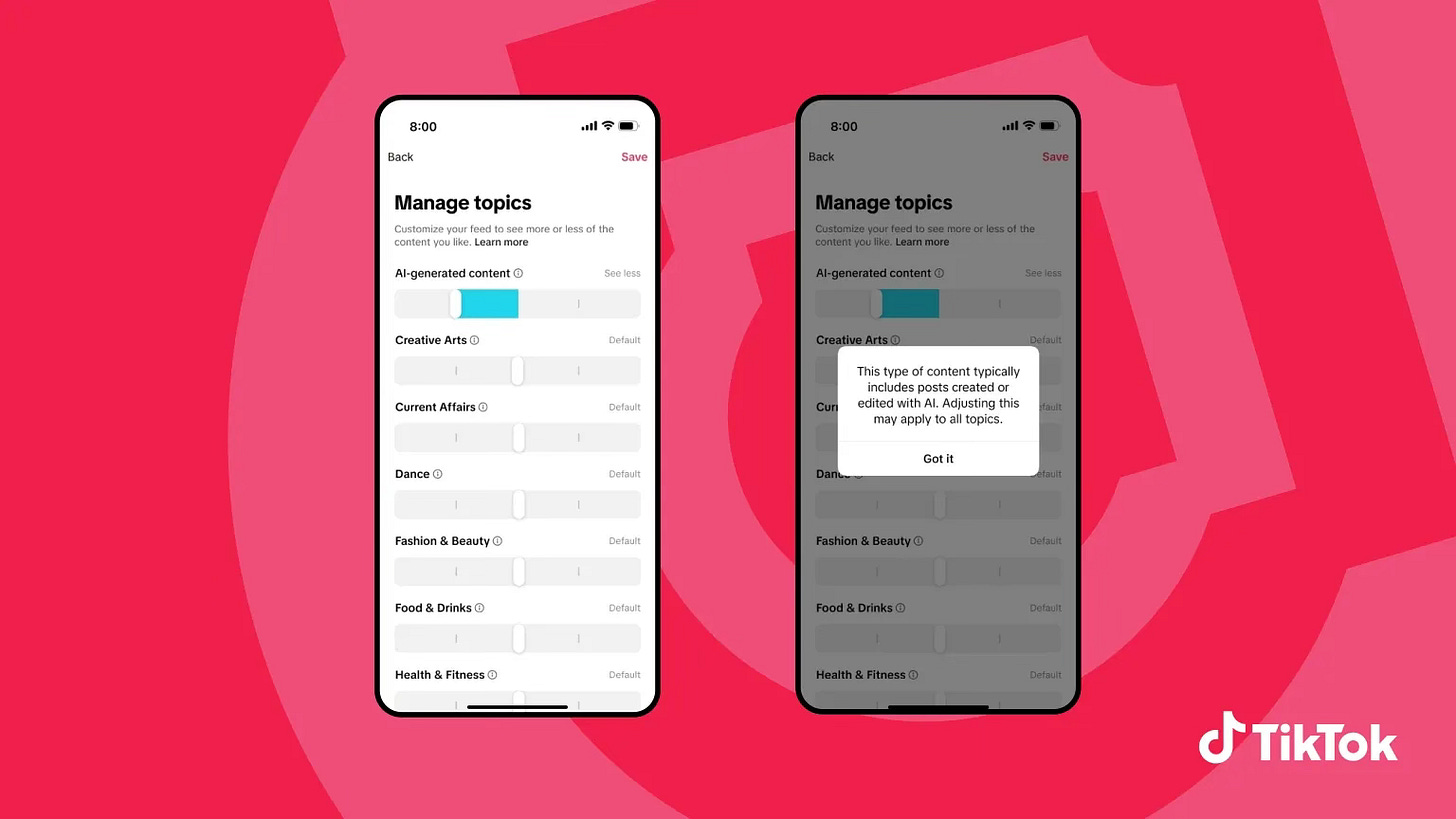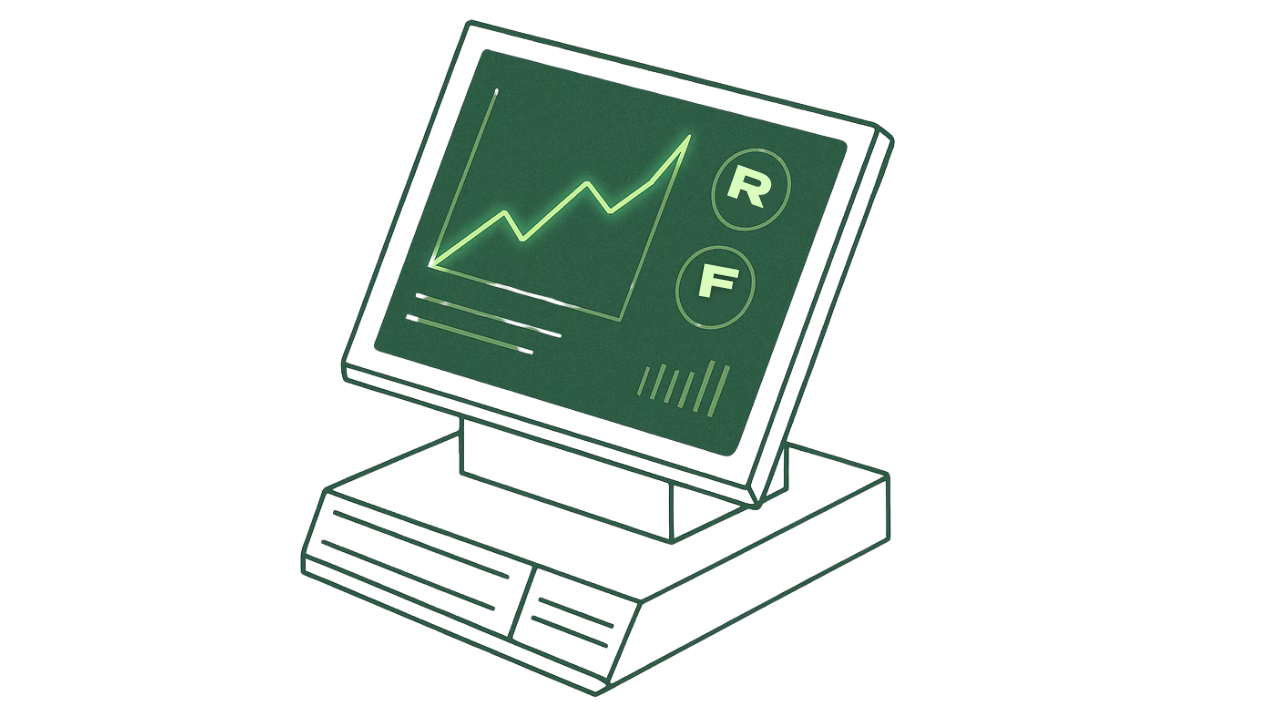The first "off-switch" for AI content.
ChatGPT opens a store, TikTok filters reality, creators hit $37B, and CEOs' most-loved books of 2025.
This morning I was browsing this list of books CEOs couldn’t put down this year and noticed Reid Hoffman’s Superagency made the list. I read it in January and included it in our Rich Future Reads for 2025 specifically because of his framework for how people respond to AI: Doomers, Gloomers, Zoomers, and Bloomers. Worth revisiting that breakdown if you haven’t read it yet.
Next Sunday I’ll be away for Thanksgiving, so this week’s Brief is the final one for November but I’ll send this month’s Deep Dive to paid subscribers on Friday.
Since we’re heading into a holiday week, I’m keeping today’s signals tight and focused on a few key themes worth reviewing before you log off, touch grass, and enjoy some pumpkin pie.
Let’s get into it.
Target opens a store inside ChatGPT
I’ve been keen to see how OpenAI rolls out monetization strategy as they prepare their path for a $1T IPO in 2026. Their ability to successfully monetize their 800M weekly user base will quash a lot of these AI bubble debates since much of it stems from foundation models spending billions on infrastructure without obvious paths to revenue that justify the valuations.
The Target partnership announced this week shifts the conversation.
Launching next week in beta, shoppers can tag the Target app inside ChatGPT and say something like “Help me plan a family holiday movie night” then instantly get curated recommendations (blankets, candles, snacks, slippers), build multi-item baskets, and check out using Drive Up, Order Pickup, or shipping.
Target’s already rolled ChatGPT Enterprise to 18,000 headquarters employees and built AI tools (Agent Assist, Store Companion, Shopping Assistant, Gift Finder) that handle everything from price matching to vendor FAQ resolution across 3,000+ questions.
I expect other major retailers like Walmart to launch ChatGPT apps quickly. OpenAI’s path to a $1T IPO becomes defensible if they capture even 2-3% of retail commerce through AI interfaces. For context, e-commerce is ~$1.1T annually in the US. And while yes, we Americans are mega-consumers, we’re still only 4% of global retail sales.
TikTok creates an “off-switch” for AI content
TikTok announced three updates this week: testing a control that lets users adjust how much AI-generated content (AIGC) appears in their feed, baking in “invisible watermarks” on AI-generated videos that can’t be removed when content is reposted elsewhere, and launching a $2M AI literacy fund for experts like GirlsWhoCode to create educational content.
This is important because TikTok is essentially defining AI content as a new genre (AIGC = the new UGC) and empowering users to take control of their experience with it. While many enjoy AI creativity, the growing inability to distinguish what’s real from a deepfake is fracturing trust in the entire social media ecosystem itself.
As annoying as the buzzword “authenticity” has become in marketing over the past 18 months, the demand for it is genuine. People want agency over which reality they’re consuming.
Traditional news created a shared sense of reality through unifying sources like newspapers, cable news, and shared cultural moments.
Social media decentralized this but until now, humans were still creating the content.
AIGC takes fragmentation to its logical end…
Your feed and mine can show completely different realities, one AI-generated, one human-documented.
I was chatting about the effects of this with my acupuncturist this week. We both agreed that AIGC media feeds have the potential to lead impressionable teens into fantasy worlds that impact their identity formation and decision-making.
You can expect the cultural divide between AIGC consumers and human content consumers to be a major theme in 2026.
This creates an opportunity for creators and brands building tools that verify humanity and help people curate their reality diet.
Creator advertising hits “must buy” status at $37B
The Interactive Advertising Bureau (IAB) released its 2025 Creator Economy Ad Spend & Strategy Report this week, showing that creator ad spend reached $37 billion in 2025, growing 4x faster than traditional media. More importantly, 48% of brands now consider creators a “must buy” category, ranking above TV and radio.
What’s noteworthy to me is that brands are moving away from DM outreach and talent agencies toward platform marketplaces like YouTube BrandConnect and TikTok Creator Marketplace. These platforms offer guaranteed measurement, fraud protection, and streamlined contracting.
If you’re not discoverable in these marketplaces, you’re invisible to the brands allocating $37B.
The other signal worth noting: 40% of buyers rank overall ROI as their top KPI.
Creators are now performance channels, not just brand awareness plays. This means conversion data beats follower count. Audience alignment and creator reputation matter more than reach. Mid-tier creators (100K-1M followers) occupy the sweet spot where it’s easiest to balance scale with authenticity.
For operators building in this space: optimize your profiles for platform marketplace algorithms. YouTube prioritizes completion rates and retention. TikTok rewards consistency and GMV.
Platform marketplaces are becoming the gatekeepers.
If you’re building creator revenue into your 2026 strategy, position accordingly.
Upgrade your Rich Future subscription to get Deep Dive analyses + Founder Playbooks on building modern wealth.
Most readers expense this through their business / education budget.
We wrap with a few quick signals on my radar that indicate where capital and culture are headed...
Google closes at a record high after unveiling its latest and greatest AI model, Gemini 3. Polymarket has Google at 88% for best AI model by year-end. Open AI lost that lead in February.
Tesla Robotaxi opened to the public in Austin and SF. Demand currently overtaking supply.
Bezos takes his first CEO role since Amazon, co-leading $6.2B AI startup Project Prometheus. Focused on AI for engineering/manufacturing of computers, cars, and spacecraft.
Real-world asset tokenization hits $35.67B as BlackRock targets $10T. Institutions continue building new rails while FinTwit debates whether the market’s peaked.
Millennials are holding 6-12 cash reserves, which is 2x the traditional 3–6 month target. That’s ~$350B sitting idle in savings accounts instead of flowing into risk assets.
ICYMI…
Last week’s Brief is already the top performing post for Rich Future. I received a few messages from readers saying it was either their favorite of the year or sparked ideas for their content strategy. Linking again if you missed it.
Partner with Rich Future
I’m always looking to spotlight new companies, founders, or tools that are driving the future forward.
For brand partnerships, email us at hello@richfuturemedia.com










